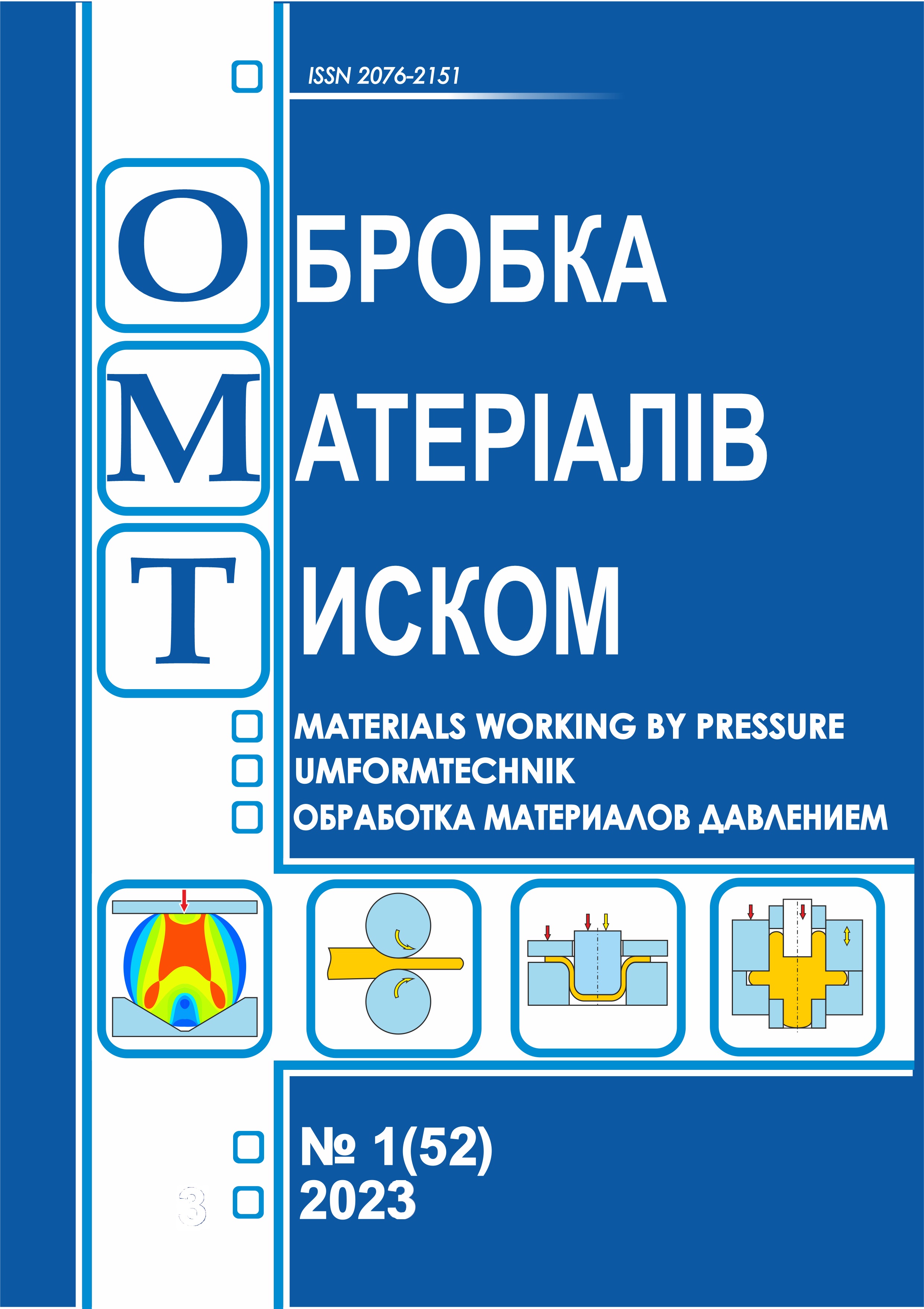Features of the process of crimping a thick-walled cylindrical workpiece
DOI:
https://doi.org/10.37142/2076-2151/2023-1(52)42Keywords:
cylindrical workpiece, stress intensity, deformation intensity, elastic deformation, plastic deformation, crimping.Abstract
Titov V., Maksymiv I., Herasimov V. Features of the process of crimping a thick-walled cylindrical workpiece.
The article provides a detailed analysis of the process of crimping a thick-walled cylindrical workpiece. This process is important for the production of various components such as cylinders, pipes and other products with a cylindrical shape. This work allows a better understanding of the mechanical behavior of materials during crimping. The purpose of the study is to analyze the accuracy of the inner surface of the cylindrical workpiece, which is formed as a result of the specified technological process. The analysis is based on the use of assumptions about the plastic and elastic behavior of the workpiece material. An important aspect is also the assumption of a flat deformed state and a three-dimensional stressed state, which is taken into account when considering the process of forming the zone of plastic and elastic deformations in the cross section of the workpiece. The applied assumptions about the plasticity and elasticity of the material, as well as about the flat deformed state and the volumetric stressed state, allowed us to consider the process of forming the zone of plastic and elastic deformations in the cross section of the workpiece. Taking these features into account, basic equations were proposed for calculating deformation and forming processes. The obtained results make it possible to describe the processes of crimping and deforming drawing with the help of deformation curves, which simplifies the analysis and calculation of these processes. The need to carry out technological processes in order to minimize springing after deformation after the occurrence of plastic deformations throughout the thickness of the workpiece has been established.
References
Romanov P.V. Stress-strain state of a hollow cylindrical shell during crimping. News of Tula State University. 2019. 12, pp. 136–138. (in Russian).
Mitin O.N. Mathematical model of crimping a pipe blank. News of Tula State University. 2019. 12, pp. 78–88. (in Russian).
Skvortsov V.F., Okhotin I.S., Arlyapov A.Yu. Precision of deep holes of small diameter in hollow thick-walled cylinders processed by mandrel processing with high interference forces. News of Tomsk Polytechnic University. 2011. 2, pp. 30–32. (in Russian).
Yakovlev S.S., Nguyen K.H. Study of power modes of the process of crimping cylindrical workpieces. News of Tula State University. 2014. 4, pp. 63-69. (in Russian).
Rosenberg O.A. Mechanics of interaction of the tool with the product during deforming broaching. Kyiv: Naukova Dumka, 1981. 288 p. (in Russian).
Titov V.A., Shamarin Yu.I., Dolmatov A.I., et al. High-quality methods of processing metals with a vice: Textbook. Kiev: KVITs. 2010. 304 p. (in Ukrainian).
Pisarenko G.S., Lebedev A.A. Deformation and strength of materials under complex stress state. - Kyiv: Naukova Dumka. 1976. 416 p. (in Russian).
Malinin N.N. Applied theory of plasticity and creep: Textbook for university students. Moscow: Mechanical Engineering. 1975. 400 p. (in Russian).

